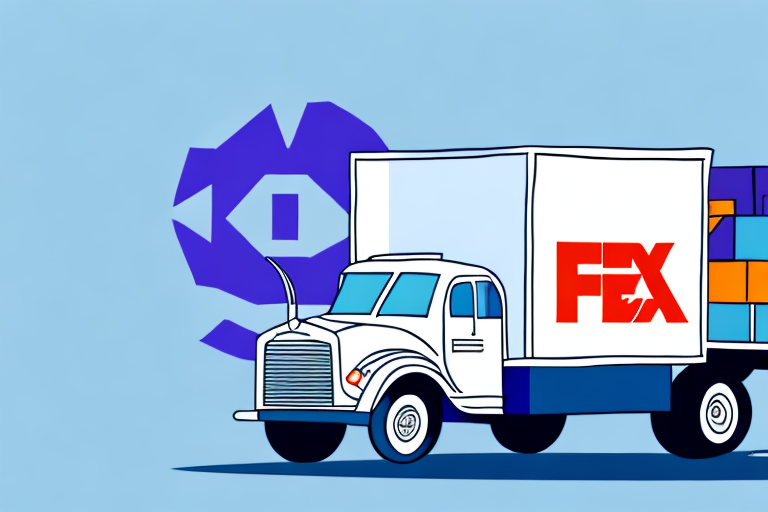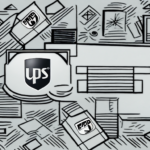Introduction to FedEx LTL Shipping
FedEx LTL (Less-Than-Truckload) shipping is an optimal solution for businesses that need to transport products too large or heavy for standard parcel services but do not require the use of an entire truck. FedEx offers a variety of LTL services tailored to different business needs, including:
- Standard LTL: Provides reliable delivery times and cost-effective rates, ideal for regular shipments.
- Expedited LTL: Suitable for businesses requiring faster delivery times.
- Guaranteed LTL: Offers a money-back guarantee on delivery times, ensuring punctual arrivals.
FedEx enhances its LTL offerings with robust tracking and shipment management tools. Businesses can leverage FedEx's online platform to monitor shipments in real-time, receive delivery notifications, and customize their shipping preferences. Additionally, FedEx provides specialized solutions, such as temperature-controlled shipping and hazardous materials handling, catering to industries with unique shipping requirements.
Committed to sustainability, FedEx has implemented initiatives like fuel-efficient vehicle fleets and alternative fuel technologies. By choosing FedEx LTL shipping, businesses not only benefit from reliable service but also contribute to environmental sustainability.
What is LTL Shipping and How Does It Work?
LTL shipping is a cost-effective method for transporting smaller freight loads. Instead of renting an entire truck, businesses pay for the space their products occupy within a shared trailer. This approach allows multiple shipments to be consolidated, optimizing transportation efficiency.
How LTL Shipping Operates:
- Consolidation: Small shipments are grouped together to fill a trailer.
- Transportation: The consolidated trailer is transported to the destination.
- Deconsolidation: Shipments are separated and delivered to their respective recipients.
Benefits of LTL shipping include significant cost savings, reduced environmental impact due to fewer trucks on the road, and flexibility in shipping schedules. However, businesses should be aware of potential drawbacks such as increased risk of damage or delays due to multiple handling and stops.
Benefits of Using FedEx LTL Shipping Services
FedEx LTL shipping offers numerous advantages to businesses, including:
- Cost Savings: Only pay for the space your shipment occupies, eliminating the need for full truck rentals.
- Reliable Delivery: FedEx's extensive carrier network ensures timely and safe delivery of goods.
- Tracking and Visibility: Utilize FedEx's online portal for real-time shipment tracking and status updates.
- Customizable Solutions: Tailor shipping options to meet specific business needs, such as specialized packaging or delivery requirements.
- Sustainability: Partnering with FedEx supports eco-friendly initiatives, reducing your business's carbon footprint.
These benefits make FedEx LTL shipping a strategic choice for businesses aiming to optimize their logistics operations while maintaining cost efficiency and reliability.
Factors that Affect FedEx LTL Rates
Several key factors influence the rates for FedEx LTL shipping:
- Shipment Weight and Dimensions: Heavier and larger shipments incur higher costs.
- Distance and Destination: Longer distances and remote destinations can increase shipping fees.
- Service Type: Premium services like expedited or guaranteed delivery come at a higher price.
- Fuel Surcharges: Fluctuating fuel prices can impact overall shipping rates.
- Additional Services: Options such as lift-gate service, inside delivery, or special handling requirements add to the cost.
Understanding these factors is crucial for businesses to effectively estimate and manage their shipping expenses. Utilizing FedEx's rate calculator can provide accurate estimates based on specific shipment details.
Understanding the FedEx Freight Classification System
The FedEx freight classification system categorizes shipments based on four primary factors:
- Density: Weight relative to the shipment's size.
- Stowability: Ease of storing the shipment in a trailer alongside other goods.
- Handling: Complexity and care required during loading and unloading.
- Liability: Risk of damage or loss.
Each shipment is assigned a freight class ranging from 50 to 500, with higher classes indicating higher shipping rates. Proper classification ensures accurate billing and reduces the risk of unexpected costs. Businesses should work closely with FedEx representatives to accurately classify their goods and optimize shipping costs.
How to Calculate LTL Shipping Rates with FedEx
Calculating FedEx LTL shipping rates involves several steps:
- Gather Shipment Details: Include weight, dimensions, origin, destination, and any special handling requirements.
- Use FedEx's Online Rate Calculator: Enter the shipment details to receive an instant quote. Access the calculator here.
- Consult a FedEx Representative: For complex or high-volume shipments, personalized assistance can provide more accurate and potentially discounted rates.
Accurate information is essential for precise rate calculations. Businesses should regularly review their shipping profiles to ensure all data reflects current needs and conditions.
Tips for Reducing Your FedEx LTL Shipping Costs
Implementing the following strategies can help businesses minimize their FedEx LTL shipping expenses:
- Consolidate Shipments: Combine multiple small shipments into a single larger shipment to take advantage of bulk rates.
- Optimize Packaging: Efficient packaging reduces dimensional weight and minimizes costs.
- Negotiate Rates: Establishing a relationship with a FedEx representative can lead to negotiated rates based on shipping volume.
- Leverage Technology: Utilize FedEx's shipping tools for better planning and tracking, reducing errors and delays.
- Schedule Shipments Strategically: Shipping during off-peak times can result in lower rates and faster service.
By adopting these practices, businesses can effectively control their shipping budgets while maintaining efficient logistics operations.
Comparison of FedEx LTL vs Other Carriers
When evaluating LTL shipping options, it's essential to compare FedEx with other carriers to determine the best fit for your business:
- FedEx: Known for its extensive network, reliable service, and comprehensive tracking capabilities.
- UPS: Offers competitive rates and a wide range of services, including specialized handling options.
- YRC Freight: Provides nationwide coverage with a focus on cost-effective shipping solutions.
- XPO Logistics: Renowned for its technology-driven approach and efficient supply chain management.
Factors to consider when comparing carriers include delivery speed, pricing, reliability, customer service, and available additional services. Businesses should assess their specific needs and conduct thorough research to select the most suitable carrier.
Common Misconceptions about LTL Shipping Rates
Several myths surround LTL shipping that can mislead businesses:
- LTL is Always More Expensive: Contrary to popular belief, LTL shipping can be more cost-effective than other methods, especially for smaller shipments.
- LTL is Less Reliable: Reputable carriers like FedEx ensure timely and secure deliveries, dispelling the notion of unreliability.
- LTL Shipping is Complicated: With user-friendly tools and support from carriers, managing LTL shipments can be straightforward.
Understanding the realities of LTL shipping helps businesses make informed decisions and leverage the benefits effectively.
How to Choose the Right FedEx LTL Service Level for Your Business
Selecting the appropriate FedEx LTL service level depends on several factors:
- Delivery Speed: Determine how quickly your shipments need to arrive. Standard LTL is suitable for regular deliveries, while expedited or guaranteed services are ideal for urgent shipments.
- Budget: Assess your budget constraints to choose a service level that offers the best balance between cost and delivery time.
- Shipment Characteristics: Consider the weight, dimensions, and nature of your goods. Specialized services may be required for hazardous or temperature-sensitive items.
By evaluating these factors, businesses can select a service level that aligns with their operational needs and customer expectations.
Understanding Transit Times and Delivery Schedules for FedEx LTL
FedEx LTL shipping offers predictable transit times based on the selected service level and shipment route. Key considerations include:
- Origin and Destination: Greater distances typically result in longer transit times.
- Service Level: Expedited services offer faster delivery compared to standard options.
- Seasonal Variations: Peak seasons may affect delivery schedules due to increased shipping volumes.
Businesses can utilize FedEx's shipping calculator to estimate transit times and plan accordingly. Additionally, real-time tracking ensures visibility into shipment progress and expected delivery dates.
Tracking Your FedEx LTL Shipments: Tools and Best Practices
Effective tracking is crucial for managing LTL shipments and maintaining customer satisfaction. FedEx provides several tools and best practices:
- Online Tracking Portal: Access real-time updates on shipment status, location, and estimated delivery times.
- Automated Notifications: Receive alerts via email or SMS for key shipment milestones.
- Accurate Documentation: Ensure all shipment details are correctly entered to facilitate seamless tracking.
- Regular Monitoring: Proactively check shipment progress to address any potential issues promptly.
Implementing these practices enhances shipment visibility and reliability, ensuring that businesses can effectively manage their logistics operations.
Common Issues with LTL Shipping and How to Avoid Them
While LTL shipping offers numerous benefits, certain challenges may arise. Common issues include:
- Shipment Damage: Handling multiple shipments increases the risk of damage. To mitigate this, use robust packaging materials and clearly label all packages.
- Delays: Multiple stops can lead to extended transit times. Planning ahead and choosing the right service level can help minimize delays.
- Lost Shipments: Accurate documentation and tracking reduce the likelihood of lost items.
To prevent these issues, businesses should adhere to best practices such as verifying shipment details, using reliable carriers like FedEx, and maintaining open communication with shipping representatives. Additionally, investing in quality packaging and regularly monitoring shipment status can further safeguard against potential problems.
Conclusion: Making the Most of Your FedEx LTL Shipping Experience
FedEx LTL shipping presents a reliable and economical solution for businesses needing to transport smaller freight loads. By comprehensively understanding service levels, accurately calculating shipping rates, and leveraging FedEx's robust infrastructure, businesses can optimize their shipping operations. Whether opting for standard, expedited, or guaranteed LTL services, FedEx offers flexible options to meet diverse shipping needs. Embracing these strategies ensures efficient, cost-effective, and dependable delivery of products, solidifying FedEx as a trusted partner in your supply chain.






















